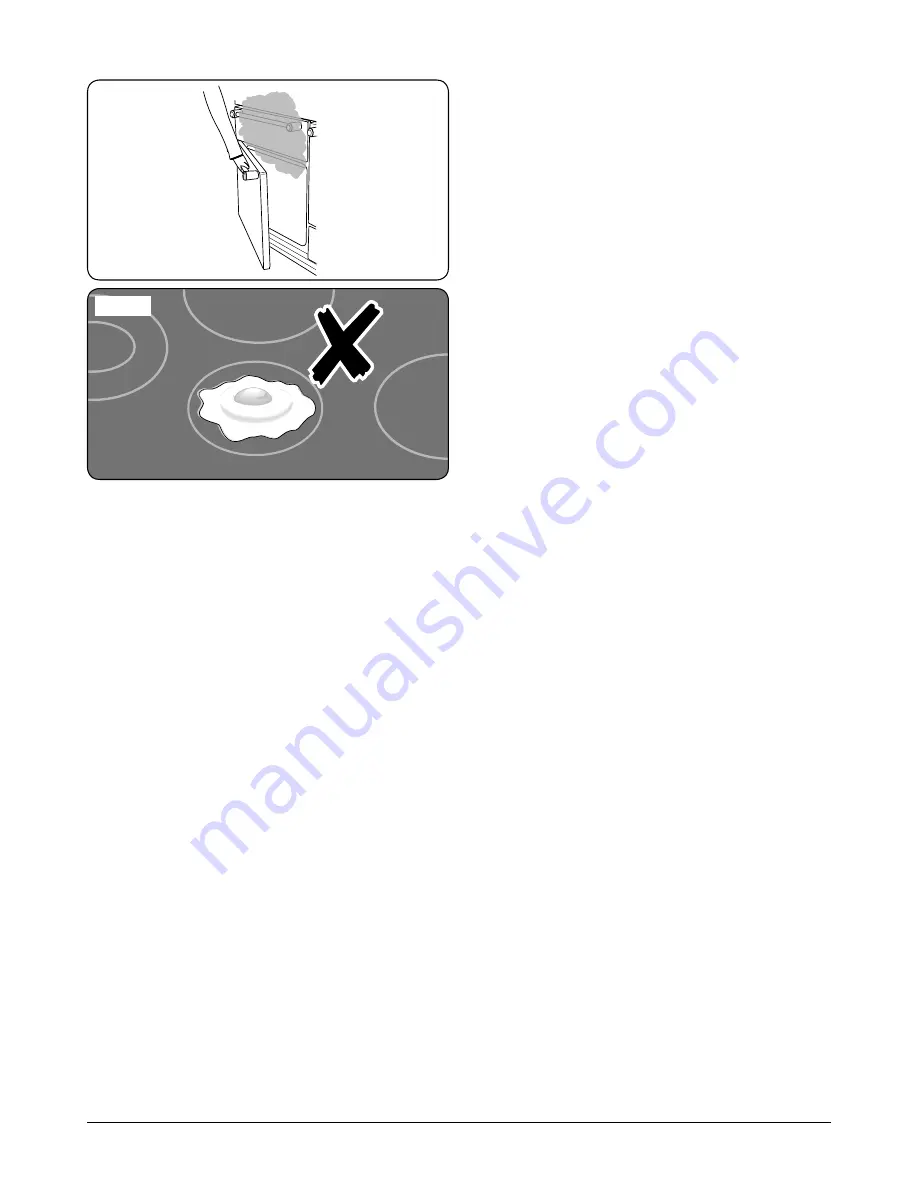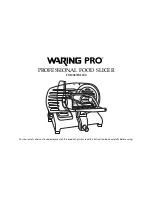
2
ArtNo.312-0001 Not cooking surface
Fig.1-2
Always be certain that the controls are in the OFF position
when the oven is not in use, and before attempting to clean
the cooker.
n
n
Take care when touching the marked cooking areas
of the hob.
n
n
When the oven is on, DO NOT leave the oven door
open for longer than necessary, otherwise the
control knobs may become very hot.
n
n
When using the grill, make sure that the grill pan
is in position and pushed fully in, otherwise the
control knobs may become very hot.
Always keep combustible materials, e.g. curtains, and
flammable liquids a safe distance away from your cooker.
n
n
DO NOT spray aerosols in the vicinity of the cooker
while it is on.
Cooking high moisture content foods can create a ‘steam
burst’ when an oven door is opened
(Fig.1-1)
. When opening
an oven stand well back and allow any steam to disperse.
Use dry oven gloves when applicable – using damp gloves
might result in steam burns when you touch a hot surface.
Do not use a towel or other bulky cloth in place of a glove – it
might catch fire if brought into contact with a hot surface.
n
n
NEVER operate the cooker with wet hands.
n
n
DO NOT use aluminium foil to cover shelves, linings
or the oven roof.
n
n
NEVER heat unopened food containers. Pressure
build up may make the containers burst and cause
injury.
n
n
DO NOT use unstable saucepans. Always make sure
that you position the handles away from the edge of
the hotplate.
Never leave the hotplate unattended at high heat settings.
Pans boiling over can cause smoking, and greasy spills may
catch on fire. Use a deep fat thermometer whenever possible
to prevent fat overheating beyond the smoking point.
n
n
WARNING!
Unattended cooking on a hob with fat or oil can be
dangerous and may result in fire.
n
n
NEVER leave a chip pan unattended. Always heat fat
slowly, and watch as it heats. Deep fry pans should
be only one third full of fat. Filling the pan too full
of fat can cause spill over when food is added. If you
use a combination of oils or fats in frying, stir them
together before heating, or as the fats melt.
Foods for frying should be as dry as possible. Frost on frozen
foods or moisture on fresh foods can cause hot fat to bubble
up and over the sides of the pan. Carefully watch for spills or
overheating of foods when frying at high or medium high
temperatures. Never try to move a pan of hot fat, especially a
deep fat fryer. Wait until the fat is cool.
Do not use the top of the flue (the slot along the back of
the cooker) for warming plates, dishes, drying tea towels or
softening butter.
ArtNo.324-0001 Steam burst
Fig.1-1







































